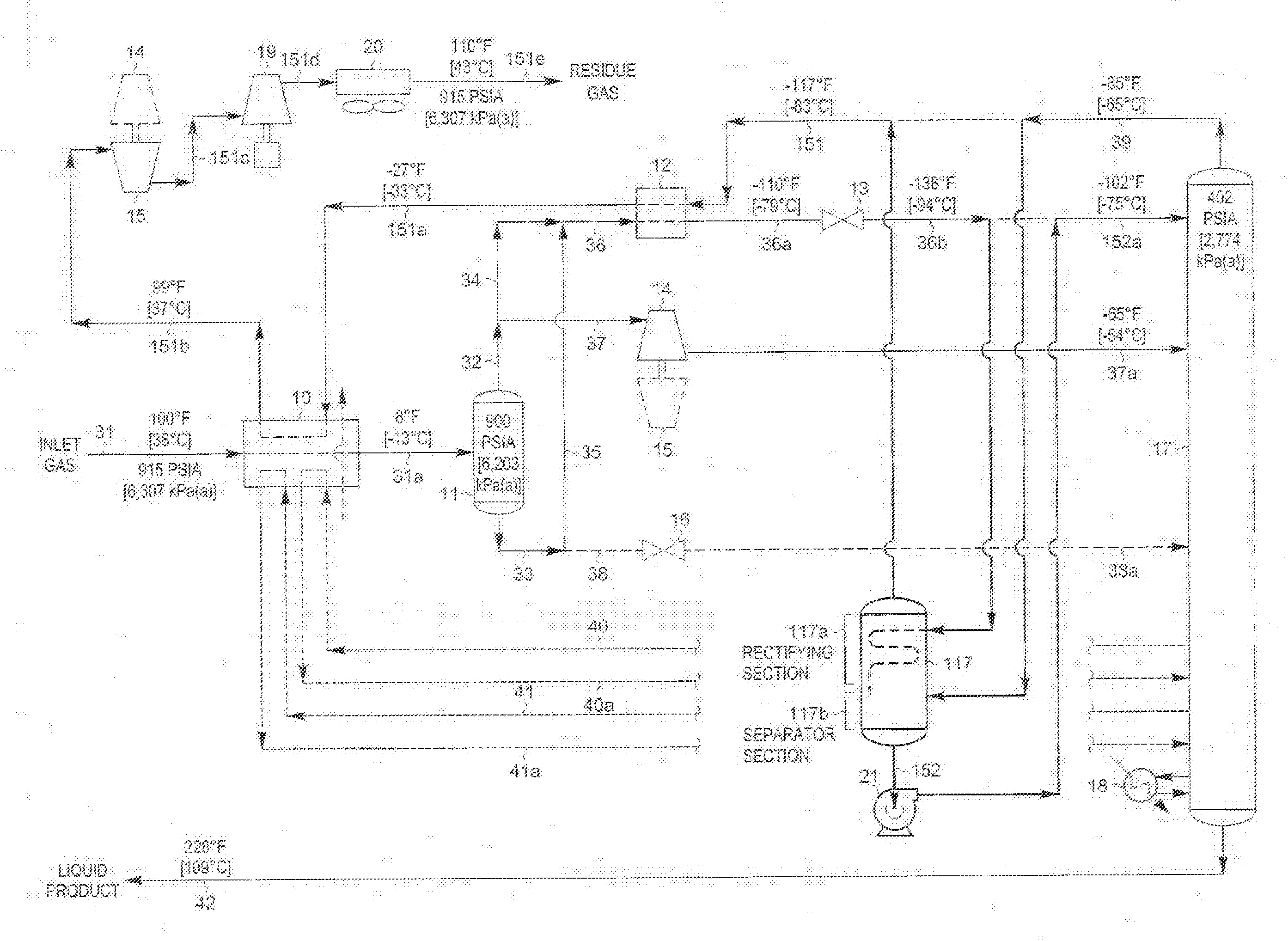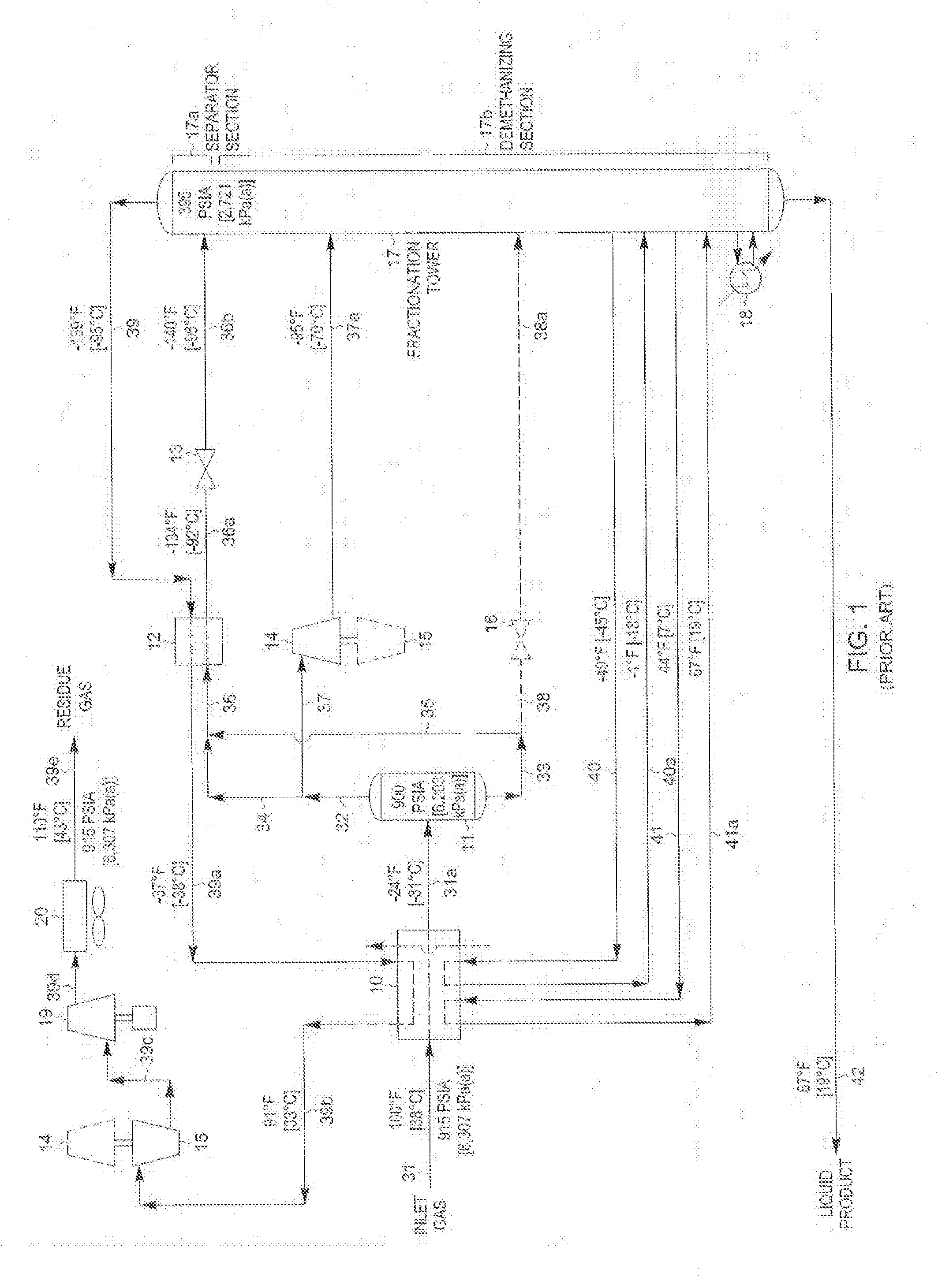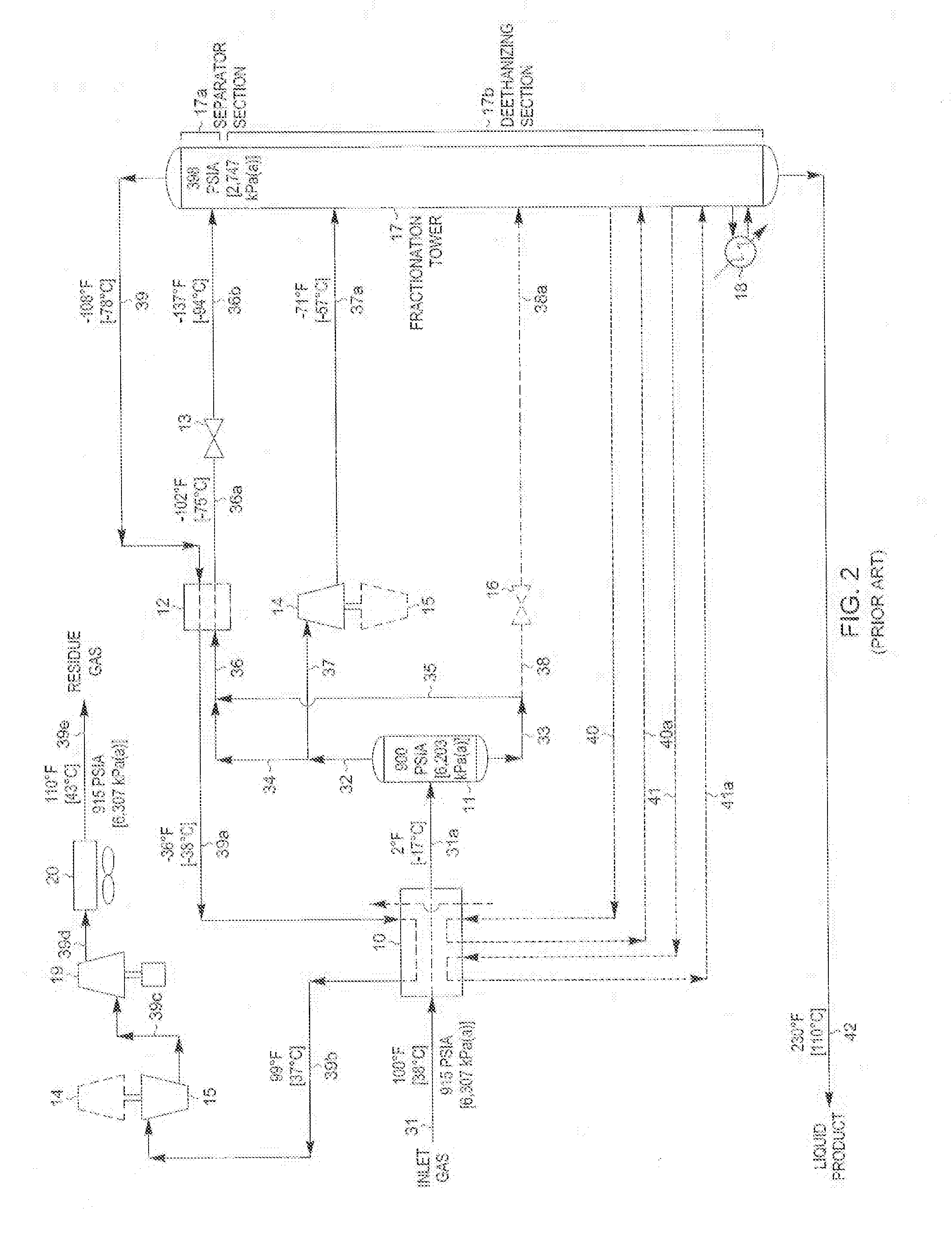Hydrocarbon Gas Processing
a technology of hydrocarbon gas and processing equipment, applied in the direction of cold treatment separation, liquefaction, lighting and heating equipment, etc., can solve the problems of adding to the capital not getting the ideal situation, and both the capital cost and the operating cost of facilities using this process
- Summary
- Abstract
- Description
- Claims
- Application Information
AI Technical Summary
Benefits of technology
Problems solved by technology
Method used
Image
Examples
example 1
[0041]In those cases where the C2 component recovery level in the liquid product must be reduced (as in the FIG. 2 prior art process described previously, for instance), the present invention offers significant efficiency advantages over the prior art process depicted in FIG. 2. FIG. 4 illustrates a flow diagram of the FIG. 2 prior art process that has been adapted to use the present invention. The operating conditions of the FIG. 4 process have been adjusted as shown to reduce the ethane content of the liquid product to the same level as that of the FIG. 2 prior art process. The feed gas composition and conditions considered in the process presented in FIG. 4 are the same as those in FIG. 2. Accordingly, the FIG. 4 process can be compared with that of the FIG. 2 process to illustrate the advantages of the present invention.
[0042]Most of the process conditions shown for the FIG. 4 process are much the same as the corresponding process conditions for the FIG. 3 process. The main diff...
example 2
[0050]The present invention also offers advantages when product economics favor rejecting only a portion of the C2 components to the residue gas product. The operating conditions of the FIG. 4 process can be altered as illustrated in FIG. 5 to increase the ethane content of the liquid product to the same level as that of the FIG. 3 prior art process. The feed gas composition and conditions considered in the process presented in FIG. 5 are the same as those in FIG. 3. Accordingly, the FIG. 5 process can be compared with that of the FIG. 3 process to further illustrate the advantages of the present invention.
[0051]Most of the process conditions shown for the FIG. 5 process are much the same as the corresponding process conditions for the FIG. 3 process. The main differences are again the disposition of flash expanded substantially condensed stream 36b and column overhead vapor stream 39. In the FIG. 5 process, substantially condensed stream 36a is flash expanded through expansion valv...
example 3
[0056]The present invention can also be operated to recover the maximum amount of C2 components in the liquid product. The operating conditions of the FIG. 4 process can be altered as illustrated in FIG. 6 to increase the ethane content of the liquid product to the same level as that of the FIG. 1 prior art process. The feed gas composition and conditions considered in the process presented in FIG. 6 are the same as those in FIG. 1. Accordingly, the FIG. 6 process can be compared with that of the FIG. 1.
[0057]Most of the process conditions shown for the FIG. 6 process are much the same as the corresponding process conditions for the FIG. 1 process. The main differences are again the disposition of flash expanded substantially condensed stream 36b and column overhead vapor stream 39. In the FIG. 6 process, substantially condensed stream 36a is flash expanded through expansion valve 13 to slightly above the operating pressure (approximately 396 psia [2,731 kPa(a)]) of fractionation to...
PUM
| Property | Measurement | Unit |
|---|---|---|
| mole percent | aaaaa | aaaaa |
| mole percent | aaaaa | aaaaa |
| mole percent | aaaaa | aaaaa |
Abstract
Description
Claims
Application Information
 Login to View More
Login to View More - R&D
- Intellectual Property
- Life Sciences
- Materials
- Tech Scout
- Unparalleled Data Quality
- Higher Quality Content
- 60% Fewer Hallucinations
Browse by: Latest US Patents, China's latest patents, Technical Efficacy Thesaurus, Application Domain, Technology Topic, Popular Technical Reports.
© 2025 PatSnap. All rights reserved.Legal|Privacy policy|Modern Slavery Act Transparency Statement|Sitemap|About US| Contact US: help@patsnap.com



